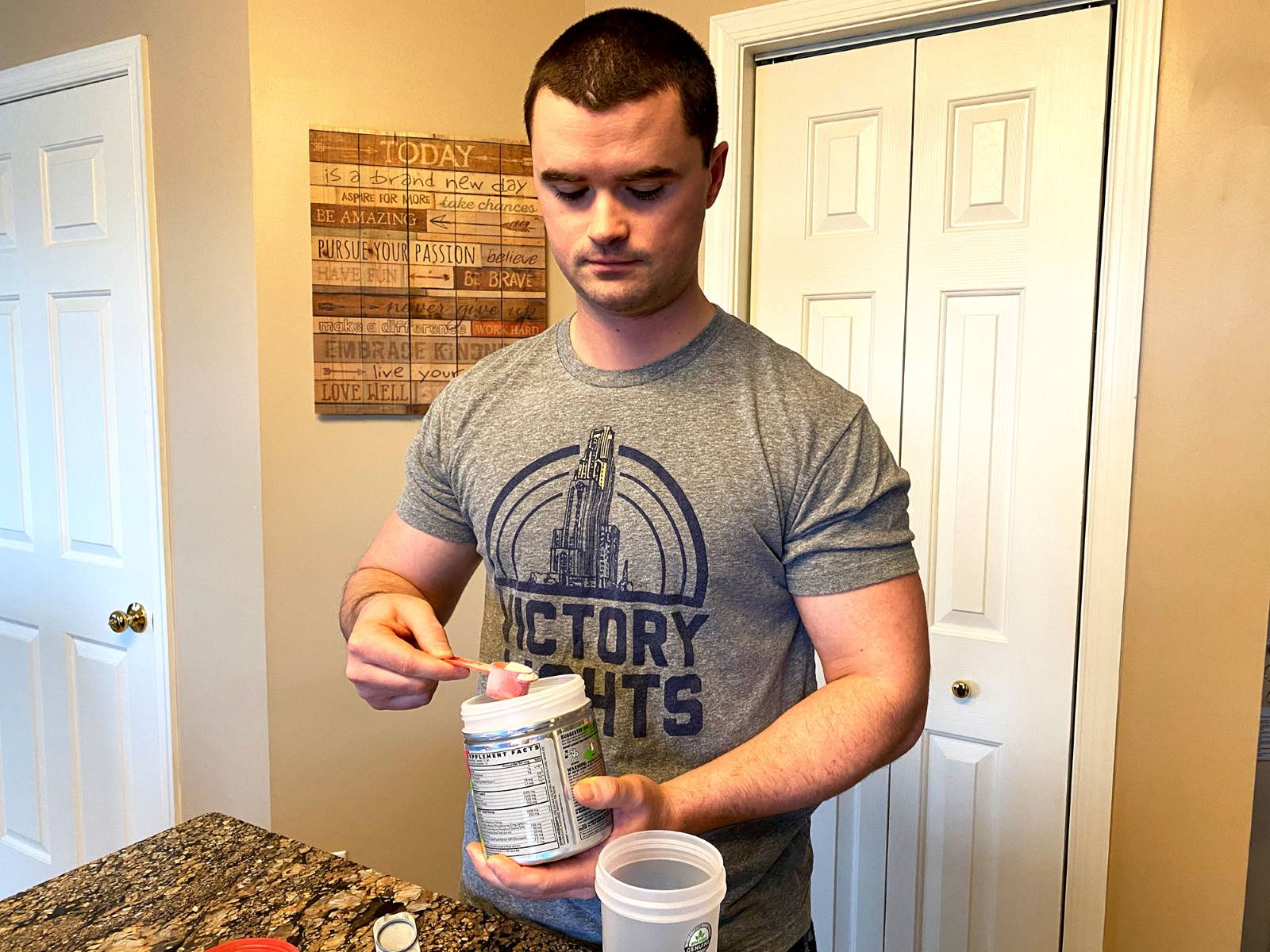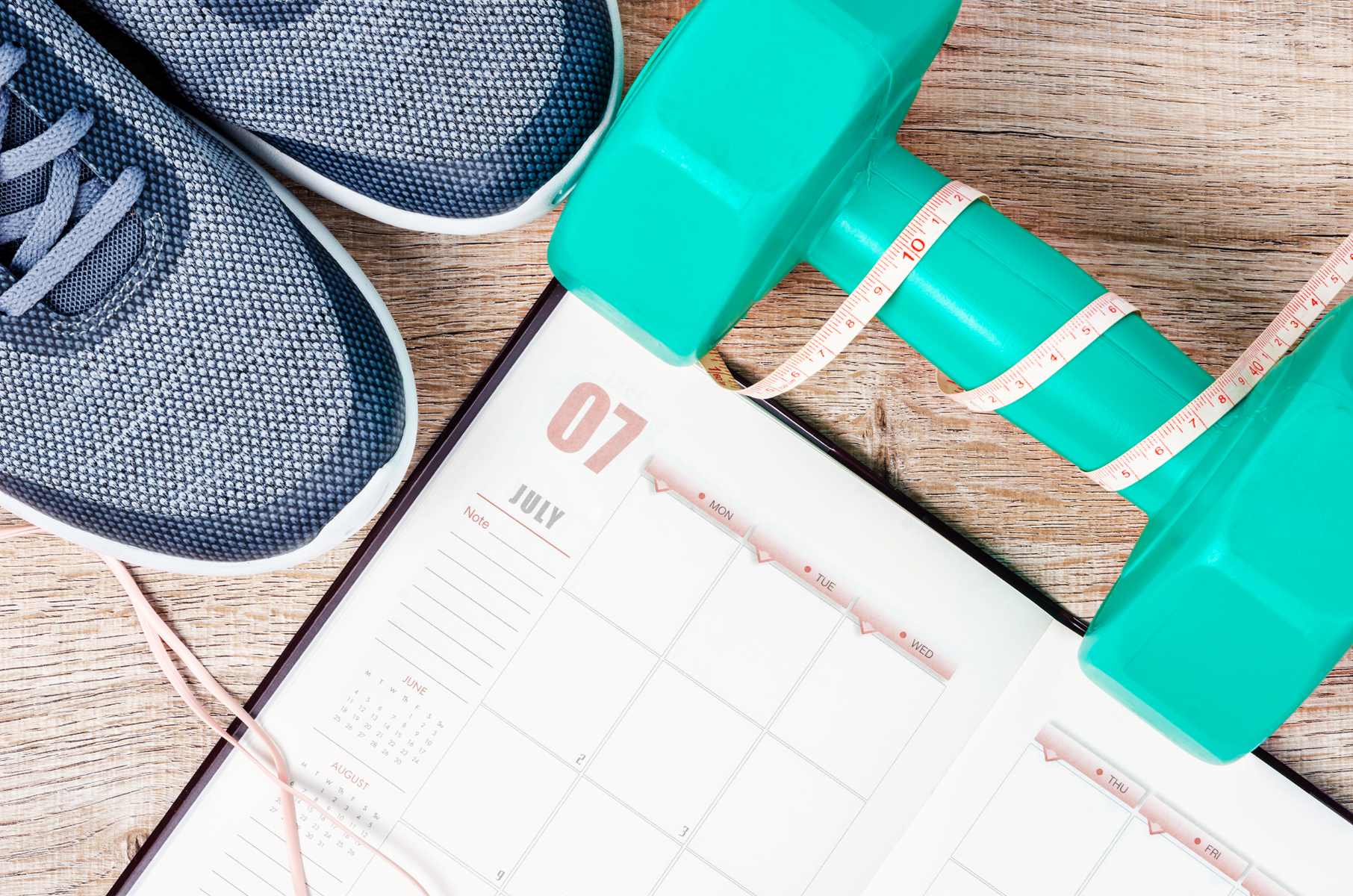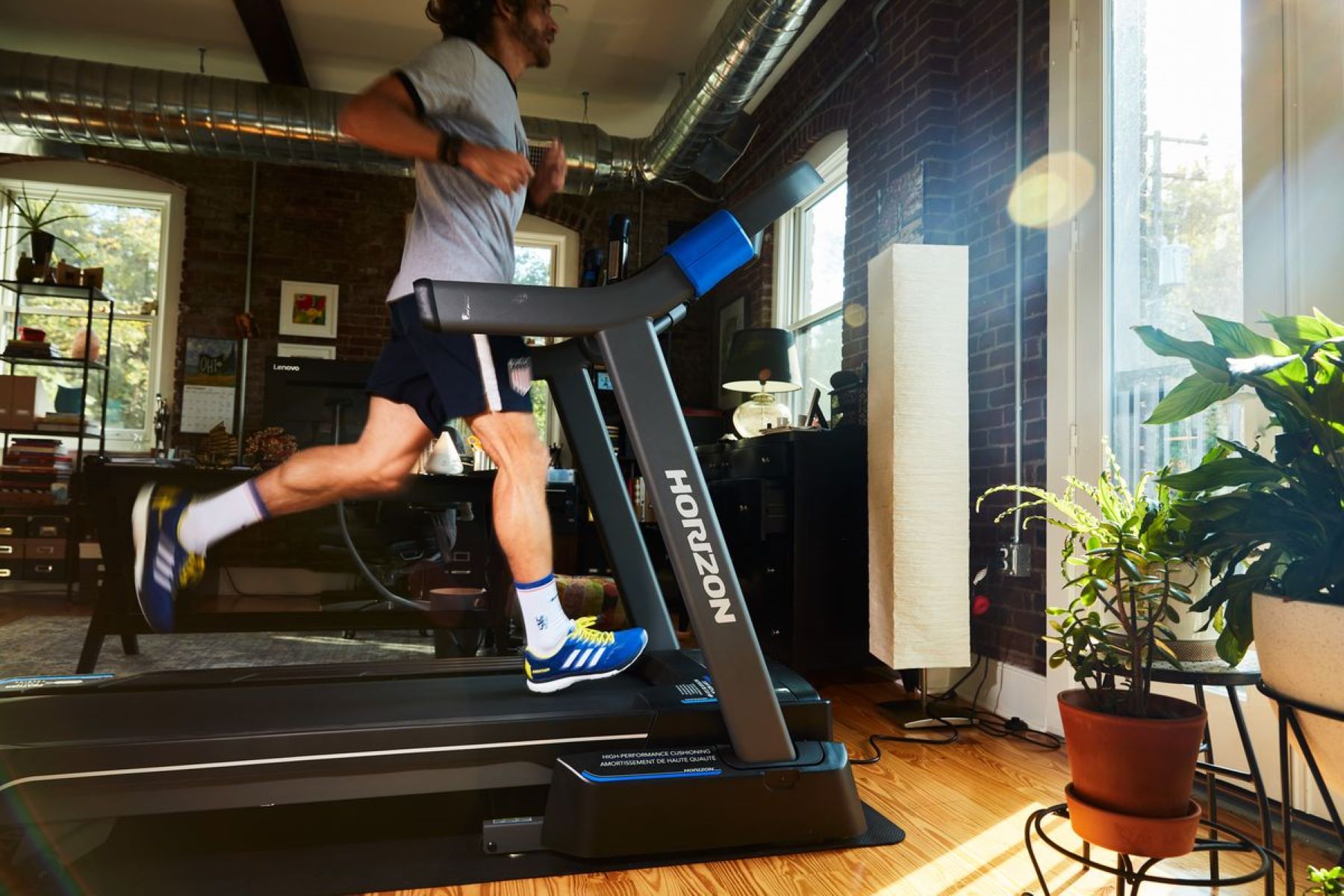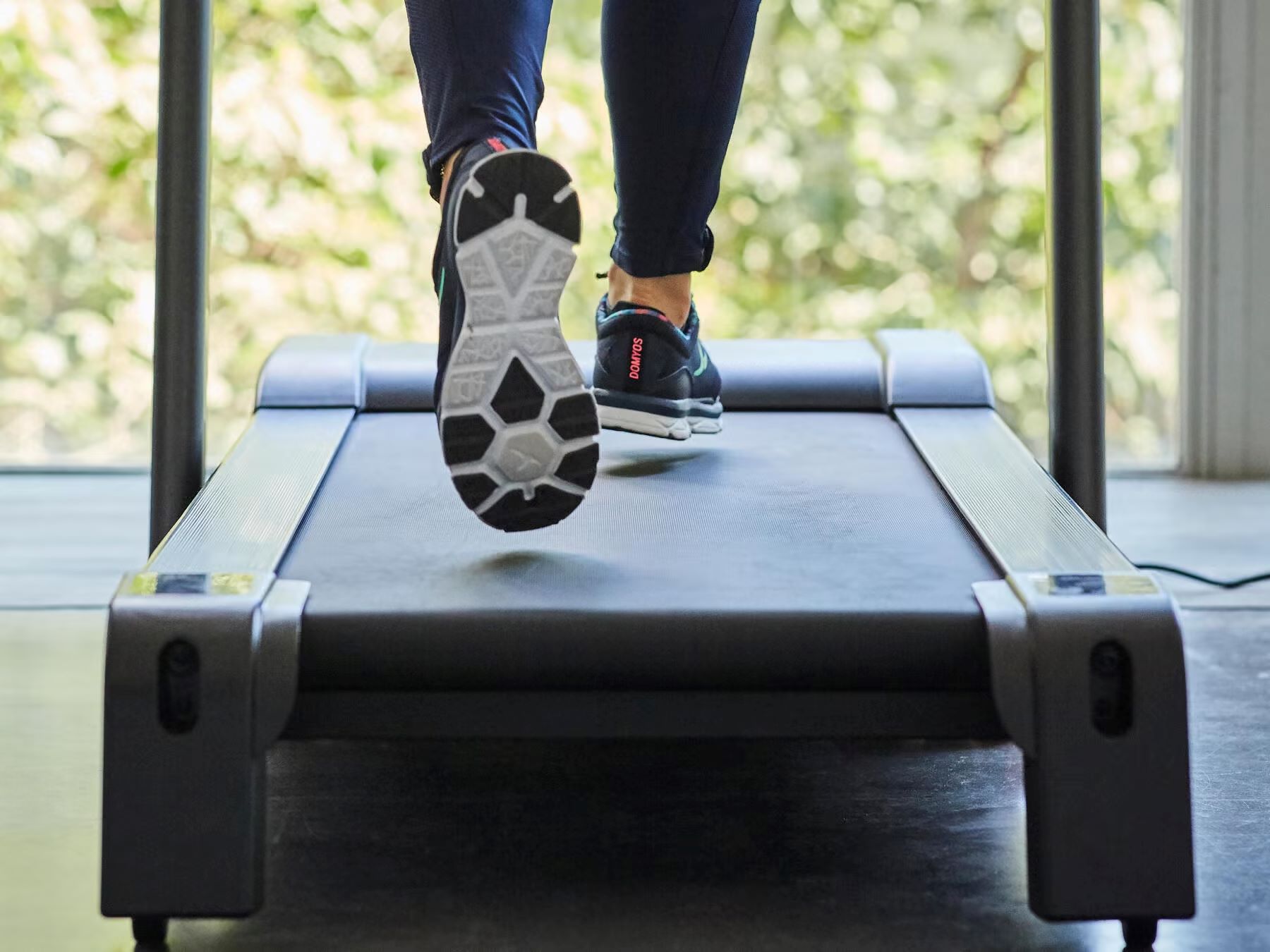

Featured
How To Increase Workout Intensity
Modified: August 21, 2023
Learn how to increase your workout intensity with these featured tips and techniques. Maximize your fitness results and take your training to the next level.
Introduction
When it comes to pushing your limits and getting the most out of your workouts, increasing intensity is key. And while there are numerous ways to do so, it’s important to find the methods that work best for you and align with your fitness goals. By boosting the intensity of your workouts, you can challenge your body, break through plateaus, and achieve the results you desire.
Workout intensity refers to the level of effort and energy expenditure you put into your training sessions. It goes beyond simply going through the motions and breaking a sweat. Increasing workout intensity requires a strategic approach that targets specific aspects of your fitness routine.
In this article, we will explore a variety of effective strategies to help you maximize your workout intensity. From adjusting resistance and incorporating interval training to focusing on proper form and utilizing advanced techniques, we will cover the essential elements that can take your workouts to the next level.
Before diving into the specific techniques, it’s important to set clear goals for yourself. Understanding what you want to achieve will help you determine the best methods to increase intensity and track your progress along the way. Whether your goals are to build strength, increase endurance, or improve overall fitness, having a clear vision will guide your intensity-boosting efforts.
Now, let’s explore the various ways you can ramp up the intensity of your workouts and maximize your results.
Understanding Workout Intensity
Before diving into the strategies to increase your workout intensity, it’s important to have a clear understanding of what it means. Workout intensity refers to the level of effort and energy expenditure that you put into your training sessions. It goes beyond just going through the motions and breaking a sweat. Intensity is what pushes your body to adapt and make progress.
There are several ways to measure and gauge workout intensity. One common method is the Rate of Perceived Exertion (RPE) scale, which is a subjective measure of how hard you feel you’re working during your workouts. It ranges from 1 to 10, with 1 being very light activity and 10 being maximum effort. Utilizing this scale can help you monitor and adjust your intensity based on your perceived effort levels.
Another way to measure intensity is through heart rate monitoring. By wearing a heart rate monitor during your workouts, you can track your heart rate zones and ensure you’re hitting the desired intensity levels. Different heart rate zones correspond to different training goals, such as fat burning, aerobic endurance, or anaerobic threshold.
Understanding and monitoring your workout intensity is crucial because it allows you to tailor your training to your specific fitness goals. If your goal is to build strength and muscle, you’ll want to focus on higher intensity workouts with heavier weights and fewer repetitions. On the other hand, if your goal is to improve cardiovascular fitness, incorporating intervals and higher heart rate zones will be key.
By understanding workout intensity and how it relates to your goals, you can effectively plan and adjust your training routine. It’s important to note that intensity is not always about pushing yourself to the brink of exhaustion. It’s about finding the right balance and challenging yourself within your limits to stimulate continuous growth and progress.
With a solid understanding of workout intensity, we can now move on to the strategies that will help you increase the intensity of your workouts and achieve your desired results.
Setting Clear Goals
Setting clear and specific goals is essential when it comes to increasing workout intensity. Without a clear direction, it’s easy to lose focus and motivation. By defining what you want to achieve, you can tailor your training and make the necessary adjustments to maximize intensity.
Start by identifying your long-term goals. Do you want to build muscle, lose weight, improve your cardiovascular fitness, or enhance overall athletic performance? Once you have a clear vision, break it down into smaller, achievable goals that you can work towards in the short term.
Next, make your goals as specific as possible. Instead of saying, “I want to get stronger,” set a specific target, such as increasing your bench press by 10 pounds within three months. Setting measurable goals gives you something tangible to strive for and allows you to track your progress along the way.
In addition to being specific, your goals should also be realistic and attainable. While it’s important to challenge yourself, setting unrealistic goals can lead to frustration and burnout. Consider your current fitness level, time constraints, and any other factors that may impact your ability to achieve your goals.
Once you have established your goals, write them down and keep them visible. This serves as a constant reminder of what you’re working towards, helping you stay motivated and focused during your workouts.
Remember that goals can evolve and change over time. Revisit and reassess your goals periodically to ensure they are still in alignment with your current priorities and aspirations.
Setting clear and specific goals provides you with a roadmap to success. It gives your workouts purpose and allows you to structure your training in a way that maximizes intensity and keeps you on track towards achieving your desired results.
Increasing Resistance or Weight
One effective way to increase workout intensity is by progressively increasing the resistance or weight that you lift. This method applies to both strength training exercises and resistance-based workouts.
As your muscles adapt to a certain level of resistance, they become stronger and more efficient. To continue challenging your muscles and promoting growth, it’s important to regularly increase the load you’re lifting.
When it comes to strength training, this can be accomplished by adding more weight to your barbell, dumbbells, or machines. Gradually increasing the resistance ensures that your muscles have to work harder and adapt to the increased demand.
For resistance-based workouts, you can use tools like resistance bands or increase the tension on machines. This creates more resistance for your muscles to overcome, resulting in increased intensity.
It’s important to note that progression should be gradual and controlled. Avoid making sudden leaps in weight or resistance, as it can increase the risk of injury. Aim to increase the load by 5-10% at a time, allowing your muscles and connective tissues to adapt to the new challenge.
Additionally, incorporating progressive overload principles can enhance the intensity of your workouts. This involves gradually increasing the volume (sets and repetitions), the intensity (weight or resistance), or the complexity (range of motion or difficulty) of your exercises over time.
By consistently increasing the resistance or weight that you lift, you force your muscles to adapt and grow stronger. This not only increases the intensity of your workouts but also contributes to building lean muscle mass and improving overall strength.
Remember to always prioritize proper form and technique when increasing the resistance. Focus on maintaining good posture and executing the exercises with control. If you find that your form is compromised, reduce the weight or resistance and work on mastering the movement before progressing further.
Increasing the resistance or weight is a fundamental strategy to elevate workout intensity and elicit continued gains in strength and muscle growth. Challenge yourself and push your limits to achieve the best results.
Incorporating Interval Training
Interval training is a highly effective method to increase workout intensity and improve cardiovascular fitness. It involves alternating between periods of high-intensity exercise and active recovery or rest.
The key to interval training is pushing your body to its maximum capacity during the high-intensity intervals, followed by a period of recovery to allow your heart rate to come down before repeating the cycle.
There are various ways to incorporate interval training into your workouts. One popular method is High-Intensity Interval Training (HIIT), which involves short bursts of intense exercise followed by short periods of active recovery.
For example, you can perform a series of 30-second sprints followed by 30 seconds of walking or jogging. Repeat this cycle for a set duration, such as 10-20 minutes, to increase the intensity of your cardio workout.
Another option is Tabata training, which involves 20 seconds of all-out effort followed by 10 seconds of rest. Repeat this cycle for a total of 4 minutes, focusing on a specific exercise or a combination of exercises.
In addition to improving cardiovascular fitness, interval training has been shown to increase calorie burn and enhance fat metabolism. This makes it a valuable tool for those looking to lose weight or improve body composition.
Interval training can be incorporated into various types of workouts, including running, cycling, swimming, and even strength training. By adding short bursts of high-intensity exercises, such as plyometric movements or compound exercises performed with lighter weights and higher repetitions, you can elevate the overall intensity of your training session.
It’s important to listen to your body and adjust the intensity and duration of the intervals to suit your fitness level. Beginners may start with shorter and less intense intervals, gradually increasing the intensity and duration as their fitness improves.
Incorporating interval training into your workouts not only boosts intensity but also adds variety and excitement to your routine. Experiment with different interval lengths, exercises, and rest periods to keep your workouts challenging and engaging.
Remember to warm up properly before diving into intense intervals and cool down properly at the end of your workout. This will help prevent injuries and aid recovery.
By adding interval training to your fitness routine, you can take your workouts to a whole new level of intensity, improve cardiovascular fitness, and achieve your fitness goals more efficiently.
Mind-Muscle Connection
The mind-muscle connection is a powerful tool that can significantly enhance workout intensity and improve muscle activation. It involves focusing your attention on the target muscle group and consciously contracting and engaging the muscles during exercise.
When you mindfully connect with the muscles you are working, you can maximize the recruitment of muscle fibers and ensure that they are effectively stimulated.
To establish a mind-muscle connection, start by selecting an exercise and visualizing the muscle group that you want to target. For example, if you’re performing a bicep curl, focus on feeling the contraction and tension in your biceps throughout the movement.
During the exercise, concentrate on the muscle you’re working, squeezing and contracting it as you lift or lower the weight. Pay attention to the range of motion and ensure that each repetition is performed with control and intention.
Engaging the mind-muscle connection not only increases the intensity of your workouts but also helps to improve form and prevent injuries. By focusing on the target muscle, you can reduce the reliance on other supporting muscles and ensure that the primary muscle group is doing the majority of the work.
The mind-muscle connection is particularly valuable for isolation exercises that target specific muscles. It can be applied to exercises such as leg extensions, tricep pushdowns, or glute bridges.
To further enhance the mind-muscle connection, consider incorporating techniques such as pause reps, where you hold the contracted position for a few seconds to intensify the muscle activation. You can also experiment with different tempos, emphasizing the eccentric (lowering) phase to increase time under tension and enhance muscle engagement.
It’s important to note that developing a strong mind-muscle connection takes time and practice. It requires concentration and mindfulness during your workouts. As you continue to train, you will become more skilled at activating and engaging the target muscles, leading to better results.
Remember to breathe properly and avoid excessive tension in other parts of your body. Relaxing non-target muscles will help you isolate and focus on the muscle you’re working.
By harnessing the power of the mind-muscle connection, you can elevate workout intensity, improve muscle activation, and ultimately achieve greater results from your training sessions.
Proper Form and Technique
Proper form and technique are crucial elements of any workout routine. They not only help prevent injuries but also optimize the effectiveness of each exercise, ensuring that you’re targeting the intended muscles and maximizing workout intensity.
When performing exercises, it’s important to prioritize proper form over lifting heavy weights or completing a high number of repetitions. Quality over quantity is key when it comes to maintaining proper form.
Proper form starts with having a solid foundation and maintaining good posture throughout the exercise. This includes positioning your body correctly, engaging your core, and maintaining a neutral spine alignment.
Before adding weight or increasing intensity, focus on mastering the technique of each exercise. This means understanding the proper movement patterns and range of motion.
Pay attention to the tempo and speed of your movements. It’s important to control the weight and execute each repetition with precision rather than rushing through the exercise. This ensures that you’re working the target muscles and reducing the risk of compensatory movements or relying on momentum.
Remember to breathe properly throughout each repetition, exhaling during the exertion phase and inhaling during the eccentric phase. Consistent and controlled breathing helps maintain proper form and provides oxygen to the working muscles.
Utilize mirrors or train with a knowledgeable partner or trainer who can provide feedback on your form. This allows you to make necessary adjustments and correct any issues or imbalances during the exercises.
Additionally, don’t be afraid to regress or modify exercises if necessary. It’s better to perform an exercise with proper form and reduced weight or difficulty than to risk injury by attempting an exercise that is beyond your current capabilities.
Proper form and technique should be the foundation of your workouts. It sets the stage for safe and effective training, maximizes muscle activation, and enhances the overall intensity of your workouts.
Remember, quality of movement is just as important, if not more so, than the quantity of weight or repetitions. Focus on mastering proper form and technique, and the results will follow.
Reducing Rest Time
Rest time between sets plays a significant role in workout intensity. By strategically reducing rest periods, you can challenge your body to work harder, increase cardiovascular demand, and enhance overall workout intensity.
Typically, longer rest periods are required for heavy lifting or strength-focused workouts to allow for adequate recovery. However, if your goal is to increase intensity and improve endurance, reducing rest time can be beneficial.
Shortening rest periods forces your body to push through fatigue and maintain a higher heart rate, leading to increased calorie burn and a more intense workout. It also helps to keep your muscles engaged and prevents them from cooling down too much between sets.
The amount of rest time reduction will depend on your fitness level, training goals, and the specific exercises you are performing. As a general guideline, try reducing rest periods by 10-30 seconds for strength-based workouts and 30-60 seconds for cardiovascular or circuit training workouts.
However, keep in mind that reducing rest time should be done gradually and progressively. If you’re unsure about how much to reduce your rest periods, start with smaller increments and adjust as you gauge your body’s response.
Be aware that reducing rest time might affect your lifting abilities and could require you to adjust the weight or intensity of your exercises. It’s essential to listen to your body and make modifications accordingly.
Another approach to reducing rest time is incorporating active recovery exercises during rest periods. Instead of completely resting, perform low-intensity movements, such as walking, light jogging, or dynamic stretches. This keeps your heart rate elevated and muscles engaged, making your workout more dynamic and intense.
In addition to boosting intensity, shorter rest periods can also increase the efficiency of your workouts by reducing overall training time. This is especially beneficial for those with busy schedules or limited time for exercise.
Remember to prioritize proper form and technique even when reducing rest time. Fatigue can compromise form, leading to potential injuries. Take the time to recover and catch your breath before moving on to the next set or exercise.
Reducing rest time is an effective strategy to increase workout intensity, improve endurance, and maximize the efficiency of your training sessions. Experiment with different rest periods and find the balance that works best for you and your goals.
Incorporating Supersets and Drop Sets
Incorporating supersets and drop sets into your workout routines can be a game-changer when it comes to increasing intensity and pushing your limits. These advanced training techniques target multiple muscle groups and challenge your body in unique ways.
A superset is a technique where you perform two different exercises back-to-back with minimal to no rest in between. These exercises can target the same muscle group (called a compound superset) or different muscle groups (called a opposing or agonist-antagonist superset).
By performing supersets, you effectively increase the overall volume and workload of your training session, stimulating more muscle fibers and increasing the intensity of your workouts. This technique also helps to save time by combining exercises and keeping your heart rate elevated throughout.
Drop sets, on the other hand, involve performing an exercise with a certain weight or resistance until failure, and then immediately reducing the weight and continuing the exercise. This allows you to fatigue the target muscle even further and push beyond your normal limits.
Drop sets are an effective way to increase intensity and challenge your muscles in a different way. They help to break through plateaus, promote muscle growth, and improve overall strength and endurance.
Both supersets and drop sets can be applied to various exercises and training modalities. For example, you can perform a superset of bicep curls and tricep dips or a drop set for squats or bench press.
When incorporating supersets and drop sets into your workouts, it’s crucial to maintain proper form and technique. Fatigue can compromise your form, so be mindful of your movements and focus on quality execution. If needed, adjust the weight or resistance to ensure that you can complete the exercises with proper form.
Additionally, it’s important to listen to your body and know your limits. These techniques can be physically demanding, so make sure to give yourself adequate rest and recovery between workouts.
Supersets and drop sets are advanced training techniques that can take your workouts to the next level. They provide a fresh and challenging stimulus for your muscles, increase intensity, and help you overcome plateaus. Incorporate these techniques into your routine to keep your workouts exciting, dynamic, and effective.
Utilizing Advanced Training Techniques
If you’re looking to take your workouts to the next level and increase intensity, incorporating advanced training techniques is a great way to challenge your body in new and innovative ways. These techniques can help break through plateaus, stimulate muscle growth, and enhance overall workout intensity.
One advanced training technique is pyramid training, which involves progressively increasing weight while decreasing the number of repetitions or vice versa within a set. For example, you can start with a lighter weight and higher reps, gradually increase the weight and decrease the reps, and then work your way back down the pyramid. This technique adds variation and intensity to your workouts.
Another technique is tempo training, in which you manipulate the speed at which you perform each repetition. Slow down the eccentric (lowering) phase of the exercise, pause at certain points, or speed up the concentric (lifting) phase. This technique challenges your muscles in a different way and increases time under tension, leading to increased intensity and muscle activation.
Cluster sets are another effective technique to increase intensity. This involves breaking up a set into smaller segments with short rest periods in between. For example, instead of performing straight sets of 8 repetitions, you can perform 2 sets of 4 repetitions with a brief rest in between. Cluster sets allow you to maintain a high level of effort and intensity throughout the workout.
Another advanced technique is the use of advanced training equipment. Incorporating tools like resistance bands, stability balls, suspension trainers, or kettlebells adds an element of instability and forces your muscles to work harder to maintain stability. These tools can also target specific muscle groups and enhance overall workout intensity.
Utilizing drop sets, as mentioned earlier, is also an effective advanced training technique. By reducing the weight or resistance immediately after reaching failure, you can continue to push your muscles and increase the intensity. Drop sets are particularly valuable for hypertrophy-focused training and muscle endurance.
It’s important to note that while advanced training techniques can be highly effective, they should be implemented strategically and in conjunction with proper form and technique. Always prioritize safety and listen to your body. If an exercise or technique causes pain or discomfort, modify or avoid it.
Lastly, keep in mind that intensity is not only about the techniques you use but also about consistently challenging yourself and pushing your limits. Progressive overload, whether through increased weight, reps, sets, or incorporating advanced techniques, is essential for continuous progress and intensity.
Incorporating advanced training techniques into your workouts can add excitement, variety, and enhanced intensity. Experiment with different techniques and find what works best for you. Push your boundaries, keep your workouts engaging, and strive for continuous improvement.
Proper Nutrition and Hydration
When it comes to increasing workout intensity and maximizing your performance, proper nutrition and hydration play a critical role. Fueling your body with the right nutrients and staying hydrated ensures that your muscles have the energy they need to work at their best.
First and foremost, it’s important to consume a balanced diet that includes a variety of whole foods. Aim to include lean proteins, complex carbohydrates, and healthy fats in your meals. Protein is essential for muscle repair and growth, while carbohydrates provide the necessary fuel for your workouts. Healthy fats support hormone production and aid in nutrient absorption.
Prioritize pre-workout nutrition by consuming a combination of carbohydrates and protein roughly 1-2 hours before your workout. This will provide your body with a steady source of energy and help prevent muscle breakdown during your training session.
Hydration is equally important for workout intensity. Proper fluid intake helps regulate body temperature, lubricate joints, and transport nutrients throughout the body. Aim to drink water consistently throughout the day and increase your fluid intake before, during, and after your workouts.
During intense exercise, especially in hot and humid conditions, you may also need to replenish electrolytes lost through sweat. Electrolytes, such as sodium, potassium, and magnesium, help maintain fluid balance and support proper muscle function. Consider consuming a sports drink or incorporating electrolyte-rich foods in your post-workout recovery meal.
Post-workout nutrition is crucial for muscle recovery and growth. Consume a combination of protein and carbohydrates within 30-60 minutes after your workout. This helps to replenish glycogen stores, repair damaged muscle tissue, and promote optimal recovery.
Additionally, don’t forget about the importance of overall nutrition and lifestyle habits in supporting workout intensity. Aim for quality sleep to allow your body to repair and recover. Manage stress levels, as excessive stress can negatively impact your performance and recovery. Prioritize whole, nutrient-dense foods to support optimal health and energy levels.
Keep in mind that individual nutrition needs can vary based on factors such as body weight, fitness goals, and metabolism. Consulting with a registered dietitian or nutritionist can help you develop a personalized nutrition plan that supports your specific needs and goals.
In summary, proper nutrition and hydration are vital for maximizing workout intensity and getting the most out of your training. Fuel your body with the right nutrients, hydrate adequately, and maintain overall healthy lifestyle habits to optimize your performance and achieve your fitness goals.
Conclusion
Increasing workout intensity is a key component to achieving optimal results in your fitness journey. By implementing various strategies, such as setting clear goals, increasing resistance or weight, incorporating interval training, focusing on the mind-muscle connection, maintaining proper form and technique, reducing rest time, incorporating supersets and drop sets, utilizing advanced training techniques, and prioritizing proper nutrition and hydration, you can elevate the intensity of your workouts and reach new levels of fitness.
Setting clear goals gives you direction and purpose, allowing you to tailor your training to your specific objectives. Increasing resistance or weight challenges your muscles, promotes muscle growth, and boosts overall strength. Incorporating interval training is an effective way to improve cardiovascular fitness and burn more calories. Focusing on the mind-muscle connection enhances muscle activation and maximizes the effectiveness of each repetition. Proper form and technique ensure safety, optimize muscle recruitment, and prevent injuries. Reducing rest time keeps your heart rate elevated and increases the metabolic demand of your workouts. Supersets and drop sets provide a unique challenge and target multiple muscle groups. Utilizing advanced training techniques adds variety, intensity, and stimulates continuous progress. Lastly, proper nutrition and hydration fuel your body, support muscle recovery, and enhance overall performance.
Remember, it’s important to listen to your body, progress gradually, and prioritize quality over quantity. Every individual is unique, and finding the strategies and techniques that work best for you may require some experimentation and adjustment. Seek guidance from qualified professionals, such as personal trainers and nutritionists, to develop a tailored plan that aligns with your goals and abilities.
By incorporating these strategies and techniques into your workouts, you can propel yourself towards achieving your fitness goals, breaking through plateaus, and experiencing the transformative power of increased workout intensity. Embrace the challenge, stay committed, and enjoy the journey as you continue to push your limits and achieve your best self.









